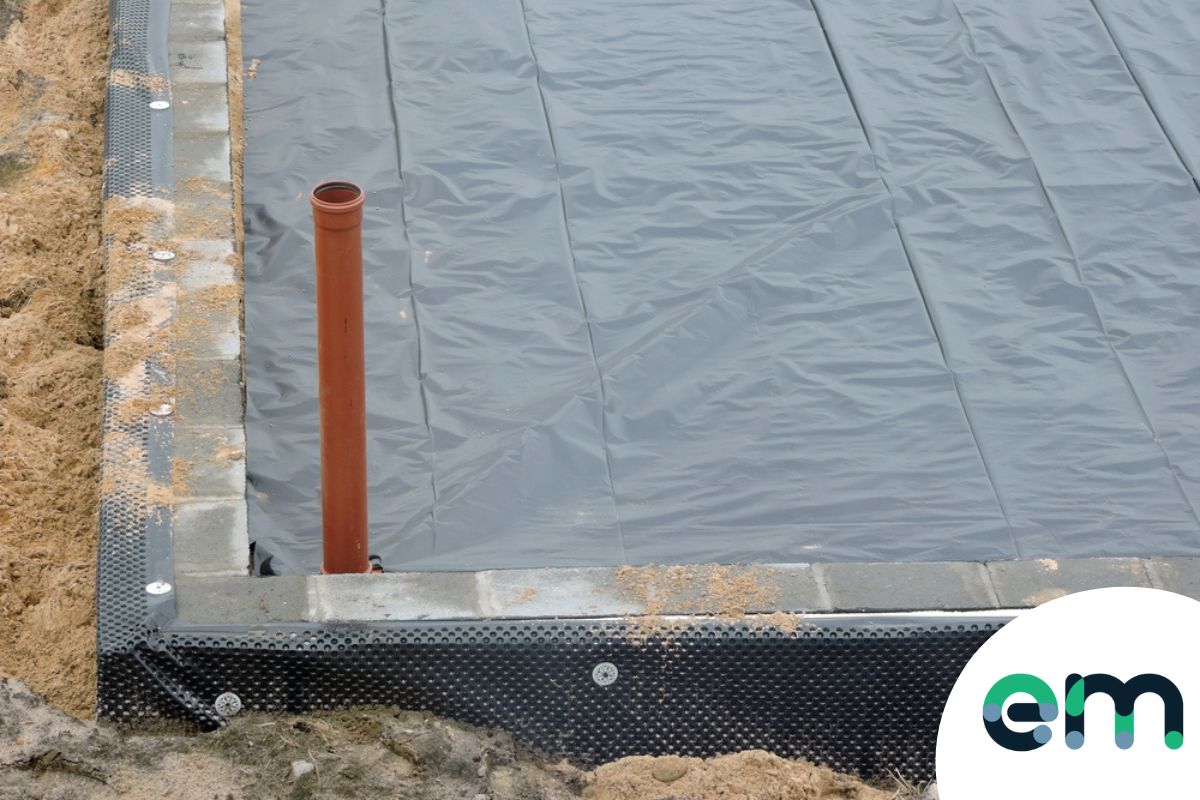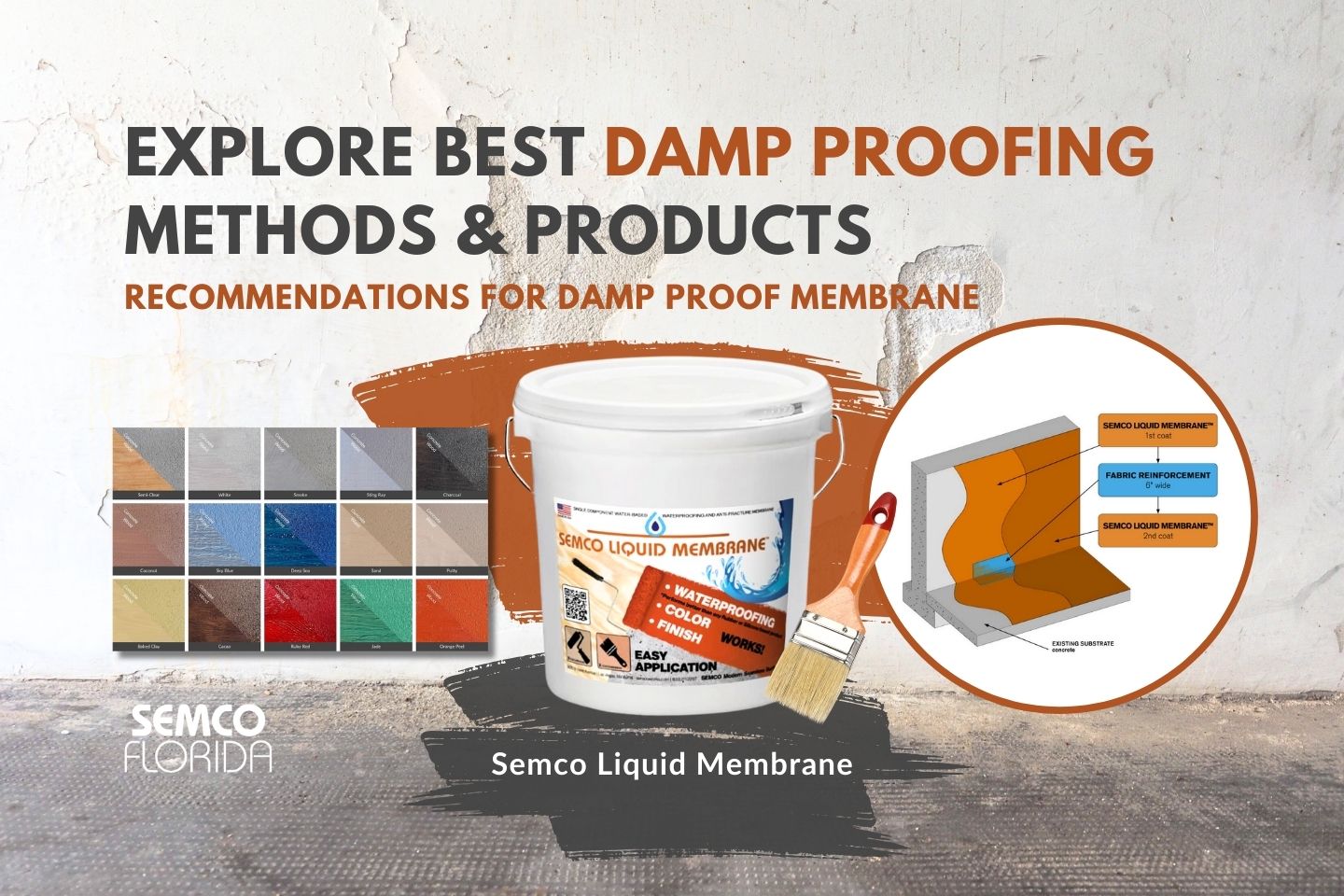Get rid of black mold effectively with mould removal newcastle services
Get rid of black mold effectively with mould removal newcastle services
Blog Article
Checking Out the Numerous Techniques and Solutions for Effective Damp Proofing
Wetness in structures positions considerable challenges to both architectural integrity and indoor air top quality. Various methods and solutions have actually emerged to battle this prevalent problem. From standard damp-proof membrane layers to ingenious chemical therapies, each approach offers distinct advantages. Recognizing these alternatives is vital for efficient dampness control. Picking the right solution depends on specific structure problems and requirements, prompting further exploration into the most effective wet proofing approaches offered.
Comprehending the Sources Of Dampness
Moisture can occur from various resources, comprehending these causes is essential for efficient removal. Commonly, wetness stems from three primary resources: increasing wet, permeating damp, and condensation. Climbing damp happens when groundwater takes a trip up-wards via porous products, such as brick or rock, usually because of an absence of an efficient obstacle (damp specialist newcastle). Penetrating moist is typically brought on by outside elements, consisting of roofing leaks, defective seamless gutters, or damaged wall surfaces, permitting water to infiltrate a property. Condensation, on the various other hand, arises from excess moisture in the air, usually intensified by poor ventilation and temperature level differences, bring about water droplets developing on surface areas. Identifying these underlying problems is important, as each kind of wetness requires a tailored technique for removal. Proper assessment assists in establishing one of the most efficient options, ultimately protecting the architectural integrity of a structure and boosting interior air quality
Conventional Damp-Proof Membrane Layers

Chemical Damp-Proofing Solutions
Chemical damp-proofing options use a cutting-edge technique to avoid moisture invasion in buildings. These methods generally include the application of liquid chemicals that penetrate stonework and form an obstacle versus climbing wet. Generally made use of chemicals consist of silanes, siloxanes, and other water-repellent agents that react with surface area products to create a hydrophobic layer.The application procedure normally needs drilling openings right into the walls, injecting the chemical solution, and allowing it to cure. This method is especially advantageous for older structures where typical damp-proof membrane layers might be not practical. In addition, chemical damp-proofing can be less disruptive and much more cost-effective than substantial improvement projects.While reliable, these options depend on correct application and environmental problems for peak performance. Routine maintenance and tracking are necessary to assure the longevity of the damp-proofing therapy. Overall, chemical damp-proofing stands for a flexible choice for protecting structures against moisture-related damage
Dental Caries Wall Construction Techniques
Tooth cavity wall construction strategies offer various benefits, particularly in moisture control and energy effectiveness. By integrating an air void in between two layers of masonry, these wall surfaces properly mitigate water ingress while improving insulation. This combination not only secures frameworks from wetness yet also adds to minimized power usage.
Benefits of Tooth Cavity Wall Surfaces
When considering efficient moist proofing techniques, the benefits of dental caries wall surfaces attract attention prominently. Dental caries wall surfaces contain 2 different layers, creating an air void that successfully reduces dampness penetration. This design lessens the risk of wetness, as the outer wall functions as an obstacle versus rain and water ingress. Furthermore, dental caries walls boost thermal insulation, which contributes to power performance by lowering warmth loss. They additionally supply sound insulation, assisting to produce a quieter indoor environment. The air space allows for air flow, which assists in wetness control and decreases the likelihood of mold and mildew development. These advantages not just enhance the total convenience of a structure however also add to its long life and structural integrity.
Dampness Control Methods
Effective wetness control strategies are critical in cavity wall surface construction to ensure lasting protection against wetness. One main technique includes the incorporation of weep holes, which assist in water drain from the dental caries, stopping accumulation. In addition, the use of breathable membranes can assist take care of moisture levels while enabling entraped vapor to escape. Appropriate positioning of insulation is additionally vital, as it needs to not obstruct drain paths. In addition, guaranteeing that the external fallen leaves of the cavity wall are constructed with water-resistant materials improves total resilience. Normal upkeep checks are important to recognize any clogs or damage early, protecting the structure's stability. Inevitably, a mix of these strategies creates a durable defense against wetness invasion in tooth cavity walls.
Insulation and Energy Effectiveness
Insulation plays a crucial function in improving energy effectiveness within tooth cavity wall surface building. By integrating protecting materials, these walls create a thermal barrier that minimizes warmth loss and lowers energy intake. Efficient insulation not only helps keep a secure indoor temperature however likewise alleviates the risk of dampness, as it protects against condensation within the wall surface tooth cavity. Numerous strategies, such as making use of inflexible foam boards or mineral wool, can be utilized to achieve perfect insulation efficiency. In addition, correct installation is necessary to guarantee that gaps and spaces are minimized, which can or else jeopardize energy efficiency. Eventually, a well-insulated tooth cavity wall adds considerably to general sustainability and reduces cooling and heating expenses for house owners.
External Damp Proofing Techniques
Exterior damp proofing approaches are crucial for safeguarding structures from moisture infiltration. 2 effective methods consist of the application of water resistant membrane layers and the installation of French drains. These services aid minimize water accumulation and preserve the integrity of buildings.
Waterproof Membrane Application
While numerous approaches exist for preventing dampness ingress, the application of water-proof membrane layers stays a highly efficient exterior wet proofing method. These membrane layers are usually made from products such as polyethylene, rubber, or modified bitumen, offering a durable obstacle against water infiltration. The installment process includes using the membrane to the external surfaces of walls or foundations, guaranteeing total protection to stop leakages. Proper adhesion and sealing at joints are important to making best use of effectiveness. Water resistant membrane layers can be applied in different forms, consisting of liquid finishes and sheet membrane layers, enabling for versatility based on the certain needs of the structure. This approach not just shields buildings from moisture yet likewise improves their durability and structural honesty.
French Drain Setup
One effective technique for managing groundwater and avoiding moisture accumulation around a structure's foundation is the installment of a French drainpipe. This water drainage system includes a trench filled up with gravel and a perforated pipe that redirects surface area water away from the foundation. Proper installation requires cautious planning, ensuring that the drain inclines far from the framework to facilitate suitable water flow. Additionally, the area of the drainpipe is important; it should be placed in areas vulnerable to merging or excess wetness. Normal maintenance, including clearing particles from the crushed rock and making sure the pipe remains unhampered, is important for long-term effectiveness. Eventually, a well-installed French drainpipe can considerably minimize the risk of water-related problems in cellars and structures.
Interior Waterproofing Techniques
Interior waterproofing approaches are essential for shielding a structure's inside from wetness infiltration and potential water damages. These methods commonly include the application of specific materials and strategies developed to develop a dampness obstacle within the structure. One usual method is making use of water-proof finishings or sealants on wall surfaces and floors, which prevent dampness from permeating surfaces.Additionally, mounting indoor drain systems, such as sump pumps, can efficiently handle water accumulation in cellars and crawl rooms. One more approach involves making use of vapor barriers, which are installed to inhibit moisture movement from the ground right into living spaces.Moreover, dealing with any kind of cracks or spaces in walls or foundations with ideal sealers assures a thorough defense against water invasion. By carrying out these indoor waterproofing techniques, building proprietors can significantly decrease the threat of mold and mildew growth, architectural damages, and other moisture-related concerns. Appropriate execution of these methods is necessary for long-term protection and building honesty.
Normal Upkeep and Evaluation Practices
Regular upkeep and evaluation methods are important for ensuring the long-lasting effectiveness of moist proofing options in any structure. Regular checks make it possible for homeowner to recognize very early indications of moisture invasion, such as peeling paint, mold growth, and stuffy smells. These signs can signify underlying problems that need instant attention.Inspections ought to be carried out at the very least yearly, concentrating on vulnerable locations like cellars, creep spaces, and outside wall surfaces. During these analyses, property owners ought to examine sealants, water here drainage systems, and ventilation to validate they function correctly.Additionally, keeping downspouts and gutters is necessary, as clogged systems can cause water buildup near the structure. Applying a regular maintenance routine, together with timely repair services, can considerably extend the lifespan of wet proofing steps and secure the structural honesty of the building. Proactive measures ultimately add to the overall health and wellness and safety of the living atmosphere.
Frequently Asked Concerns
Exactly How Long Does Damp Proofing Generally Last?
The duration of moist proofing efficiency varies, generally lasting between 20 to 50 years. Variables such as application top quality, ecological problems, and upkeep techniques substantially affect the long life of the damp proofing treatment.

Can I Damp Proof My Home Myself?
The specific pondered the feasibility of DIY damp proofing. With appropriate research study and the best materials, it is feasible. They likewise acknowledged the significance of specialist advice to guarantee resilient performance and protect against future issues.
What Are the Signs of Inadequate Damp Proofing?
Signs of inefficient damp proofing include persistent musty odors, visible mold growth, peeling paint, damp patches on walls, and timber degeneration - damp proofing newcastle. Property owners need to attend to these concerns promptly to stop further damages and health issues
Does Damp Proofing Affect Indoor Air Quality?

How Much Does Expert Damp Proofing Price?
Professional damp proofing prices vary significantly, generally varying from $1,000 to $5,000 relying on the property's dimension, the degree of the damp problem, and chosen approaches. Each scenario needs a tailored analysis for exact prices. Generally, wetness stems from three primary resources: climbing wet, passing through wet, and condensation. When considering effective wet proofing approaches, the advantages of tooth cavity walls stand out prominently. Outside moist proofing methods are essential for securing frameworks from moisture infiltration. While numerous methods exist for stopping moisture access, the application of water resistant membrane layers stays a very efficient exterior moist proofing method. Signs of ineffective damp proofing consist of consistent moldy smells, noticeable mold development, peeling paint, damp spots on wall surfaces, and timber degeneration.
Report this page